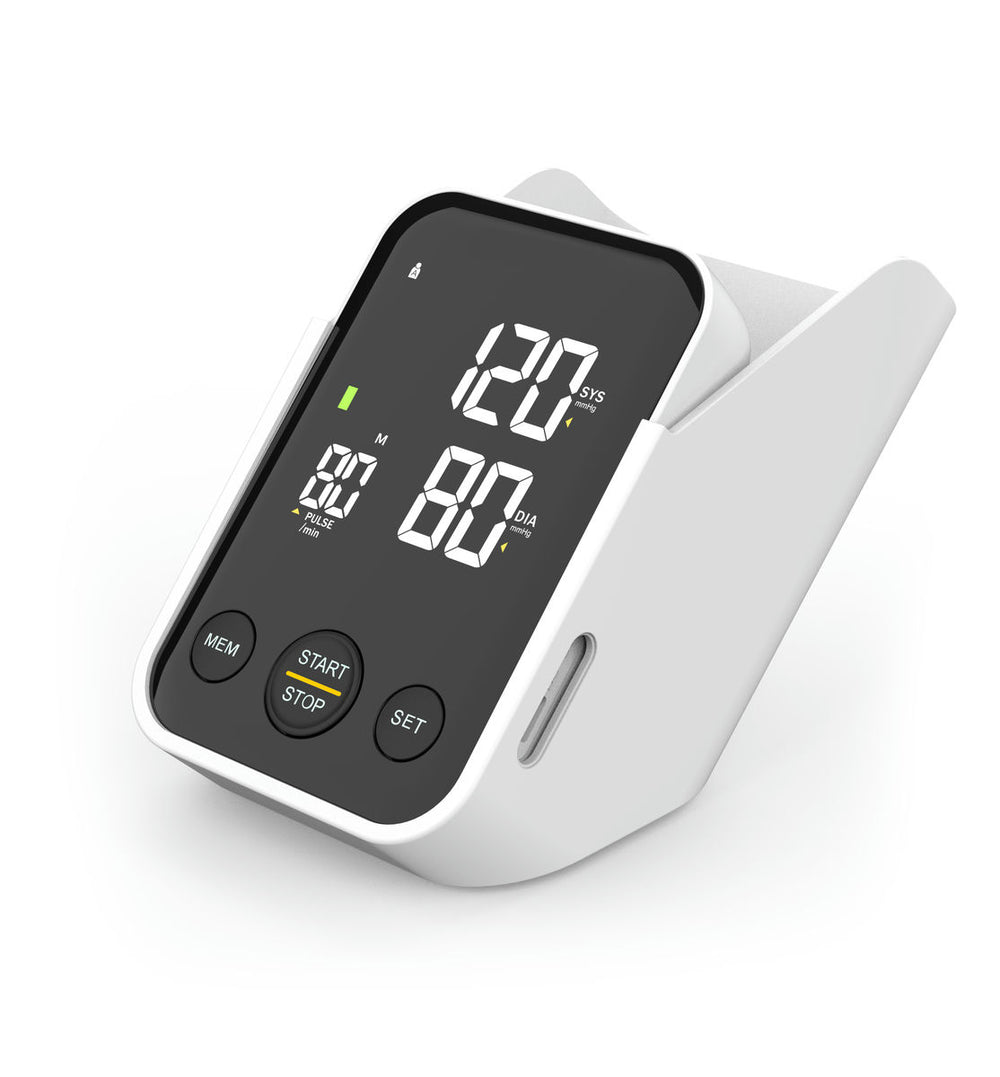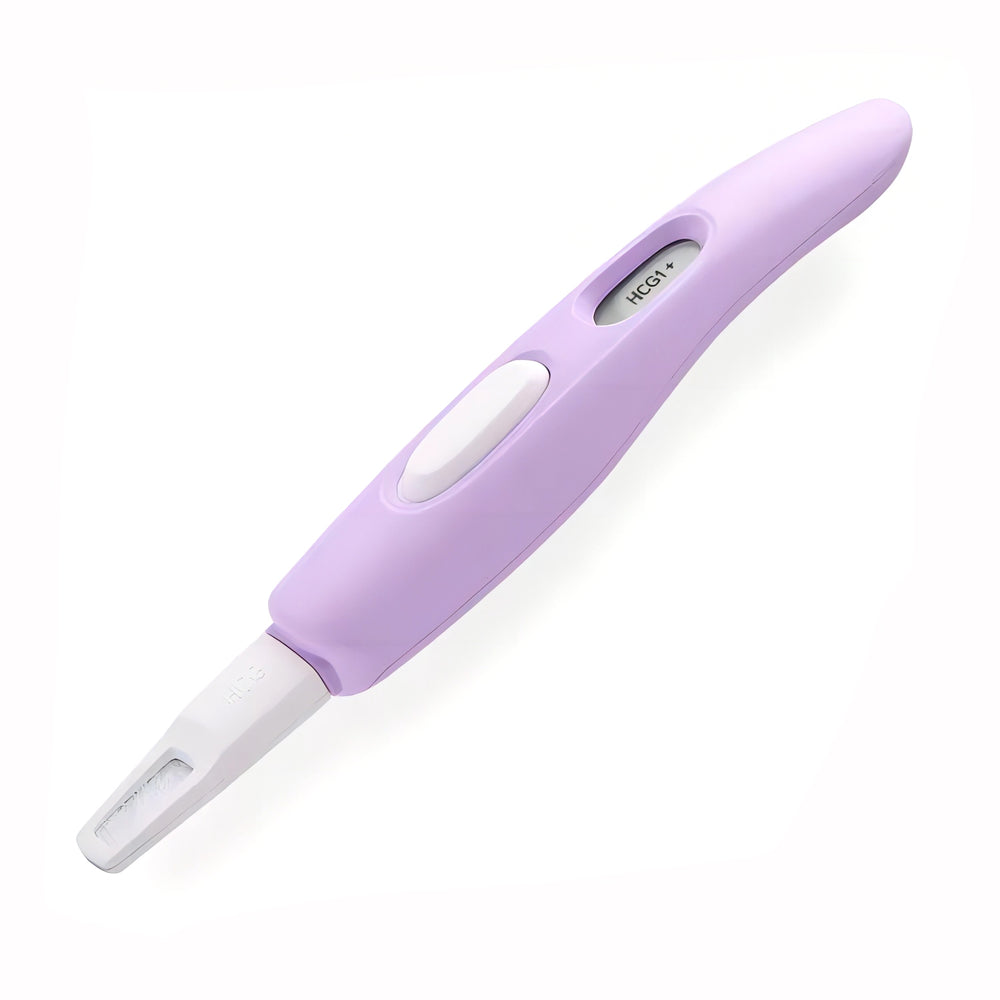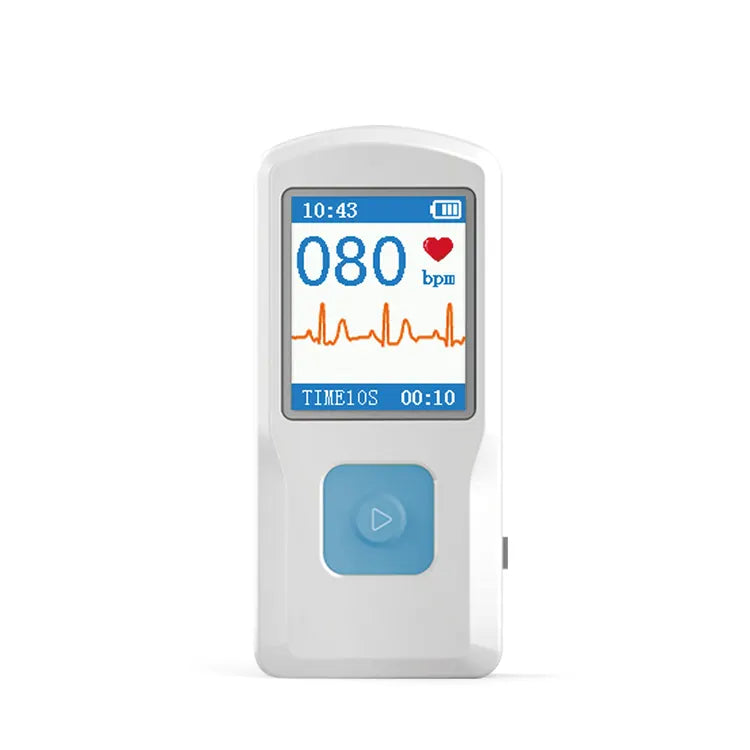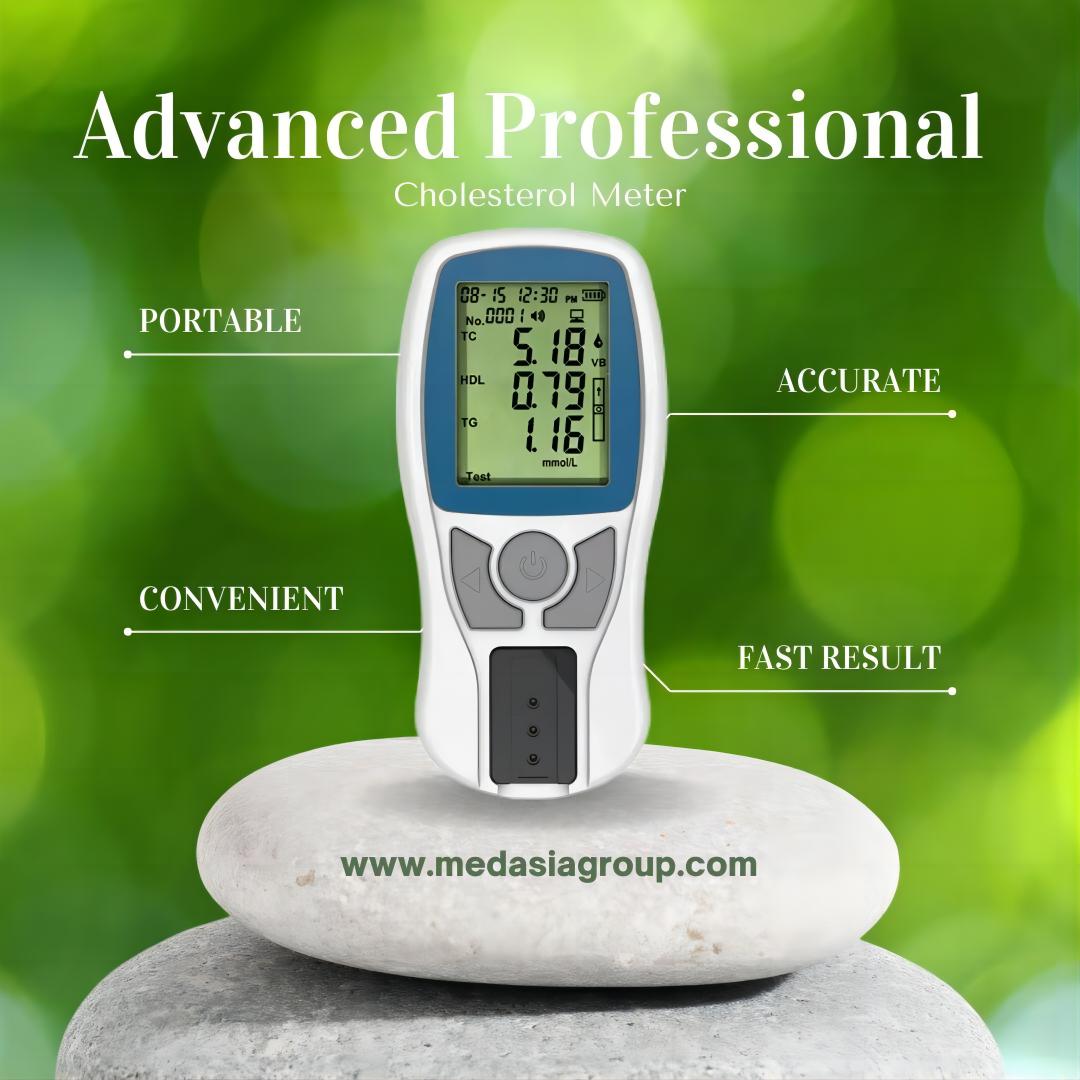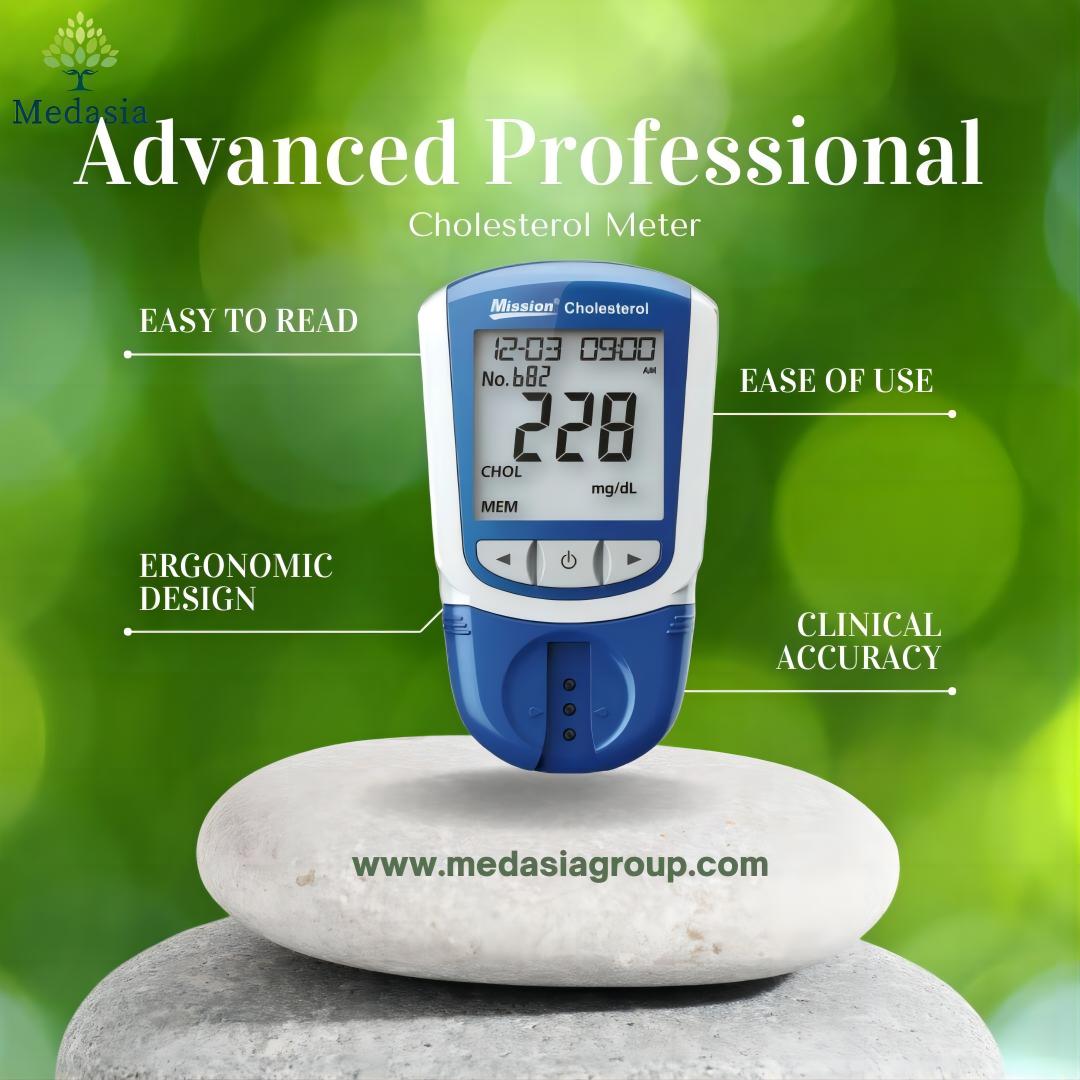Maximize Conception Chances: Digital Ovulation Tests
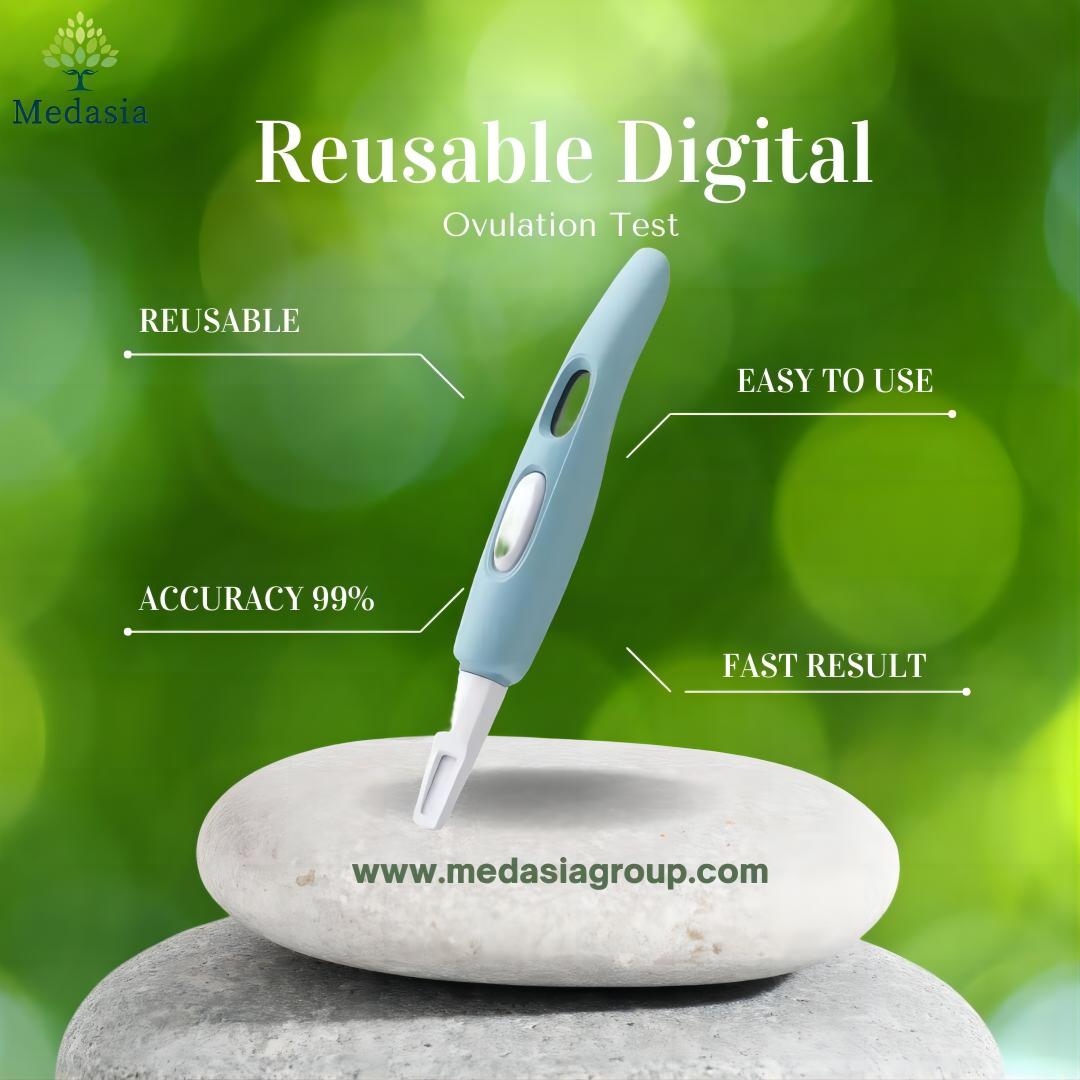
Are you trying to conceive and wondering how to maximize your chances of getting pregnant? Look no further than digital ovulation tests. These innovative devices take the guesswork out of tracking your fertility by accurately detectingthe hormones in your urine that indicate when you are most fertile.

By using digital ovulation tests, you can pinpoint your fertile window with ease and precision. Unlike traditional methods such as tracking your basal body temperature or monitoring cervical mucus, digital ovulation tests provide clear and easy-to-read results.
With just a few simple steps, you can determine the best time to try for a baby – increasing your chances of conception. Whether you're just starting out on your journey to parenthood or have been trying for a while, digital ovulation tests can provide valuable insights and support.
Don't leave your conception journey to chance. Invest in digital ovulation tests and take control of your fertility. Get ready to welcome the new addition to your family.

How do digital ovulation tests work?
Digital ovulation tests work by detecting the surge in luteinizing hormone (LH) that occurs right before ovulation. LH is a hormone that is naturally present in your body, but its levels increase dramatically about 24 to 36 hours before you ovulate. By measuring the levels of LH in your urine, digital ovulation tests can accurately predict when you are most fertile.

Unlike traditional ovulation tests that use lines or symbols to indicate fertility, digital ovulation tests provide clear and easy-to-understand results. They typically display a smiley face or a positive/negative result, making it simple to interpret the data. With digital ovulation tests, there is no need to guess whether the lines are faint or dark – you get a definitive answer.
Using digital ovulation tests is straightforward. You simply collect a urine sample in a cup or hold the test stick in your urine stream, depending on the brand.
After a few minutes, the test will display your result. Some digital ovulation tests also come with an app or a monitor that allows you to track your results over time, providing you with a clearer picture of your fertility patterns.
Benefits of using digital ovulation tests

There are several benefits to using reusable digital ovulation tests when trying to conceive.
Here are some of the key advantages:
1. Accuracy: Digital ovulation tests are highly accurate in detecting the surge in LH that precedes ovulation. This means you can trust the results and time intercourse accordingly.
2. Convenience: Unlike other methods of tracking ovulation, such as monitoring basal body temperature or cervical mucus, digital ovulation tests are quick and easy to use. There's no need for charting or interpretation – the results are clear and unambiguous.
3. User-Friendly Experience: Transforming the testing process into a breeze! Simply attach the strip to the display pen, immerse it in urine for a quick 10-20 seconds, and witness the magic unfold. Within just 5 minutes, the results will materialize before your eyes, providing a seamless and efficient experience like never before!
4. Environmentally Conscious Innovation: Take a step towards sustainability with our reusable ovulation test! Unlike traditional tests, our eco-friendly design allows you to use the strip multiple times without compromising accuracy. Not only does it empower you to track ovulation effortlessly, but it also champions environmental protection, making a positive impact with every use. Join us in making a difference—your fertility journey just got both effective and environmentally friendly!
5. Precision: Digital ovulation tests allow you to pinpoint your fertile window with precision. This can be particularly helpful if you have irregular cycles or if you're trying to optimize your chances of conception within a specific timeframe.
6. Peace of mind: Trying to conceive can be stressful, but digital ovulation tests can provide peace of mind by giving you a clear indication of your fertility status.
Knowing when you are most fertile can help alleviate anxiety and uncertainty.
7. Long-term tracking: Some digital ovulation tests come with advanced features, such as apps or monitors, that allow you to track your fertility over time. This can provide valuable insights into your menstrual cycle and help you identify any patterns or irregularities.
Understanding your menstrual cycle
Before diving into how to use digital ovulation tests effectively, it's important to have a basic understanding of your menstrual cycle. Your menstrual cycle is divided into two phases: the follicular phase and the luteal phase.

The follicular phase starts on the first day of your period and ends with ovulation.
During this phase, follicle-stimulating hormone (FSH) stimulates the development of follicles in your ovaries. These follicles contain eggs, and as they mature, they produce estrogen.
Ovulation occurs approximately halfway through your menstrual cycle. This is when the dominant follicle releases a mature egg into the fallopian tube. The release of the egg is triggered by a surge in luteinizing hormone (LH), which is what digital ovulation tests detect.
After ovulation, the luteal phase begins. This phase lasts until the start of your next period and is characterized by the production of progesterone, which prepares the uterus for implantation.
Understanding the different phases of your menstrual cycle is crucial when using digital ovulation tests. It allows you to interpret the results accurately and time intercourse when you are most likely to conceive.
How to use digital ovulation tests effectively
Using digital ovulation tests effectively involves a few simple steps. Here's a guide to help you maximize your chances of conception:
1. Start testing at the right time: To determine when to start testing, you need to have an idea of the length of your menstrual cycle. If your cycle is regular, you can use the average length as a starting point. For example, if your cycle is typically 28 days, start testing around day 11. If your cycles are irregular, it may be helpful to track your cycle for a few months to identify patterns before starting testing.
2. Test consistently: Once you start testing, it's important to do it consistently to get accurate results. Follow the instructions provided with the test kit and test at the same time every day. Most digital ovulation tests recommend testing in the afternoon or evening, as LH levels tend to be higher during these times.
3. Interpret the results: After testing, the digital ovulation test will display your result. A positive result usually indicates that the LH surge has been detected, and ovulation is likely to occur within the next 24 to 36 hours. This is the optimal time to have intercourse. If the result is negative, continue testing daily until you get a positive result or your period starts.
4. Time intercourse: Once you receive a positive result, it's time to have intercourse. Aim to have intercourse within the next 24 to 48 hours to maximize your chances of conception. Sperm can survive in the reproductive tract for up to five days, so having intercourse in the days leading up to ovulation can also increase your chances of getting pregnant.
5. Track your results: If your digital ovulation test comes with an app or a monitor, make use of it to track your results over time. This can help you identify patterns in your menstrual cycle and give you a better understanding of your fertility.
Using digital ovulation tests effectively requires consistency and patience.
It's important to remember that even with perfect timing, conception may not happen right away. If you've been trying for a while without success, it may be worth consulting with a healthcare professional to rule out any underlying issues.
Tips for maximizing your chances of conception
In addition to using digital ovulation tests, there are several other steps you can take to maximize your chances of conceiving:
1. Maintain a healthy lifestyle: Eating a balanced diet, exercising regularly, and managing stress can all contribute to a healthy reproductive system.
Make sure to incorporate these habits into your daily routine.
2. Avoid smoking and excessive alcohol consumption: Both smoking and excessive alcohol consumption can have a negative impact on fertility.
If you're trying to conceive, it's best to avoid these substances altogether.
3. Take prenatal vitamins: Prenatal vitamins, particularly those containing folic acid, are important for a healthy pregnancy.
Start taking them before you conceive to ensure your body has the necessary nutrients to support a growing baby.
4. Have regular, unprotected intercourse: The more frequently you have intercourse, the higher your chances of conceiving. Aim to have intercourse every two to three days throughout your menstrual cycle, not just during your fertile window.
5. Stay positive and relax: Trying to conceive can be emotionally challenging.
It's important to stay positive and try to relax. Consider exploring stress management techniques such as meditation or yoga. By implementing these tips and using digital ovulation tests effectively, you can maximize your chances of conception and increase the likelihood of starting or expanding your family.
Common misconceptions about ovulation testing
Despite the benefits and accuracy of digital ovulation tests, there are still some common misconceptions surrounding ovulation testing. Let's debunk a few of them:
1. Ovulation tests can be used as a form of contraception: Ovulation tests are designed to detect the LH surge that precedes ovulation, not to prevent pregnancy. They should not be used as a method of contraception.
2. A positive ovulation test means you're definitely ovulating: While a positive ovulation test indicates that the LH surge has been detected, it doesn't guarantee that ovulation will occur. Factors such as stress or hormonal imbalances can affect ovulation.
3. Ovulation always occurs on the same day: Ovulation can vary from cycle to cycle, even in women with regular menstrual cycles. It's important to continue testing until you receive a positive result or your period starts.
4. Ovulation tests are only for women with irregular cycles: Ovulation tests can be beneficial for women with both regular and irregular cycles. They can help pinpoint the fertile window and increase the chances of conception, regardless of cycle regularity.
5. Ovulation tests are expensive: While digital ovulation tests may seem more expensive upfront compared to other methods of tracking ovulation, they can be cost-effective in the long run. By providing accurate results and reducing the time it takes to conceive, they can save you money on unnecessary fertility treatments or consultations.We understand concerns about expenses, so we've crafted a test that you can use multiple times, ensuring you get the most out of your investment. Say goodbye to single-use tests and hello to smart savings without compromising accuracy. Experience the future of fertility tracking – affordable, sustainable, and designed with you in mind.

Understanding these misconceptions can help you make informed decisions when it comes to tracking your fertility and using digital ovulation tests.
Other methods of tracking ovulation
While digital ovulation tests are highly accurate and convenient, there are other methods you can use to track ovulation. Here are a few alternatives:
1. Basal body temperature (BBT) charting: BBT charting involves taking your temperature every morning before getting out of bed and tracking it over time.
A rise in temperature usually indicates that ovulation has occurred.
2. Cervical mucus monitoring: Tracking changes in cervical mucus can provide insights into your fertile window. As you approach ovulation, your cervical mucus becomes clear, slippery, and stretchy.
3. Ovulation prediction kits (OPKs): Similar to digital ovulation tests, OPKs detect the LH surge that occurs before ovulation. They usually involve urine-based tests, but the results are interpreted differently.
4. Fertility awareness methods (FAM): FAM involves tracking various fertility signs, such as cervical mucus, BBT, and cervical position, to determine when you are most fertile.
Each of these methods has its pros and cons, and what works for one person may not work for another. It's important to find the method that suits you best and provides accurate results.
The importance of consulting with a healthcare professional
While digital ovulation tests and other methods of tracking ovulation can be helpful, it's important to remember that they are not a substitute for professional medical advice. If you've been trying to conceive for a while without success, or if you have any concerns about your fertility, it's recommended to consult with a healthcare professional.
While digital ovulation tests and other methods of tracking ovulation can be helpful, it's important to remember that they are not a substitute for professional medical advice. If you've been trying to conceive for a while without success, or if you have any concerns about your fertility, it's recommended to consult with a healthcare professional.
Remember, every individual is unique, and what works for one person may not work for another. A healthcare professional can provide personalized advice based on your specific circumstances.
Conclusion: Taking control of your fertility journey
When it comes to trying to conceive, taking control of your fertility journey is key.
Digital ovulation tests offer a convenient and accurate way to track your fertile window, increasing your chances of conception.
By understanding your menstrual cycle, using digital ovulation tests effectively, and implementing lifestyle changes, you can maximize your chances of getting pregnant. Don't forget to stay positive, relax, and seek professional guidance if needed.
Remember, every journey to parenthood is unique, and it may take time to achieve your goal. Be patient, trust the process, and know that with the right tools and support, you can increase your chances of welcoming a new addition to your family.
Related Articles
The Promising of Cholesterol Testing
What Advantages Of A Portable Mesh Nebulizer?
Hemoglobin Meter: Let's help people to monitor anemia
How to choose a better digital thermometer
Digital Pregnancy Test : Assisting Couples in Conceiving
Portable Fetal Doppler: Bonding with Your Baby
Reference Articles
Zinaman M., et al. Current Medical Research and Opinion. (2012) 28: 1–6.
Tiplady S., et al. Human Reproduction (2013) 28(1): 138-151. 210 women.
WE RECOMMEND
Related posts
- Subscribe MedInsights
- Subscribe MedInsights
- Subscribe MedInsights
- Subscribe MedInsights
- Subscribe MedInsights




